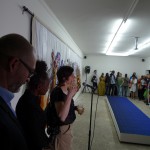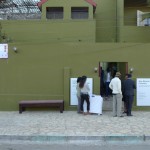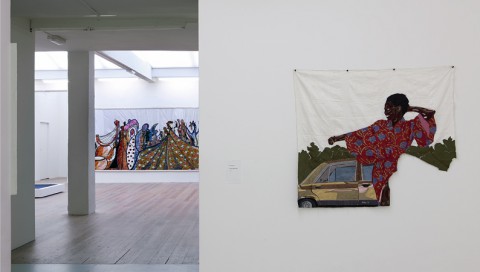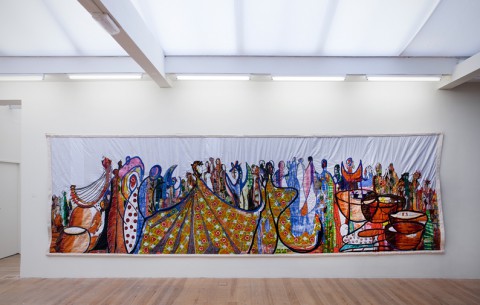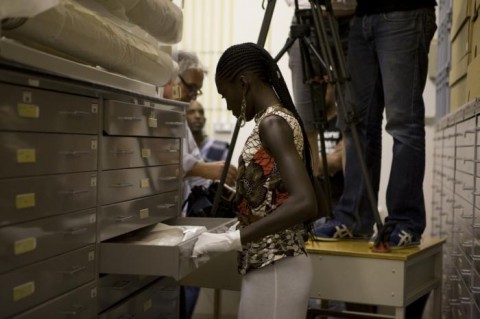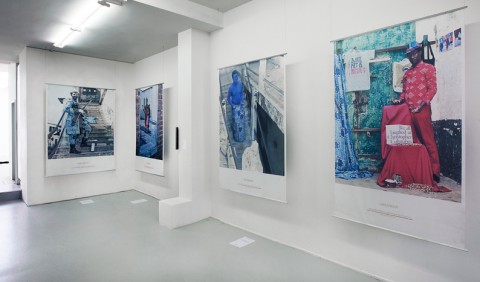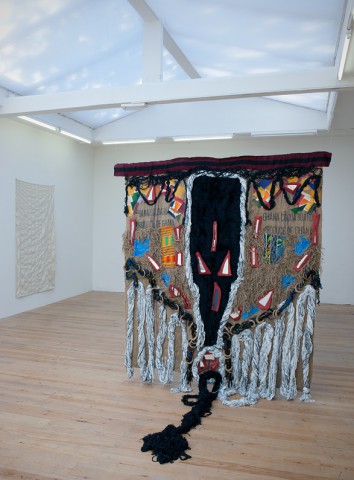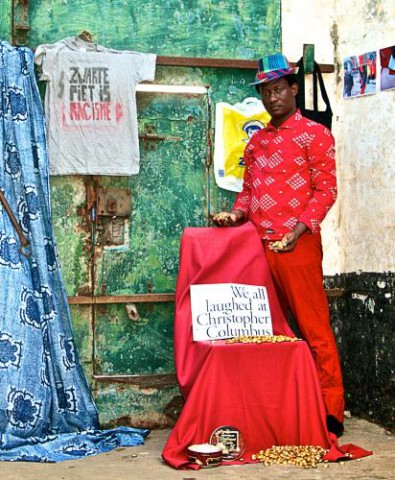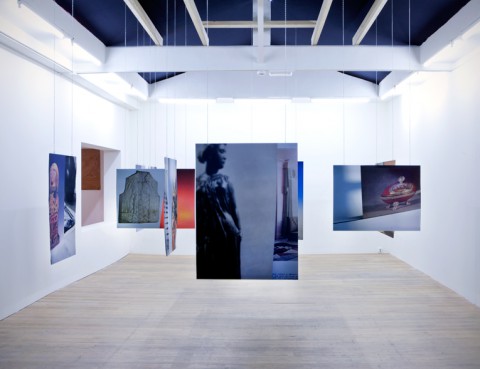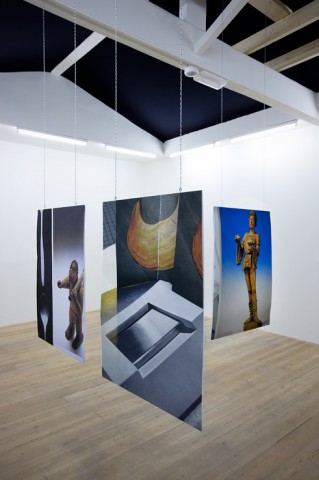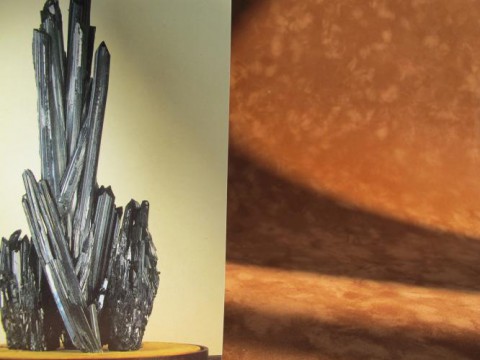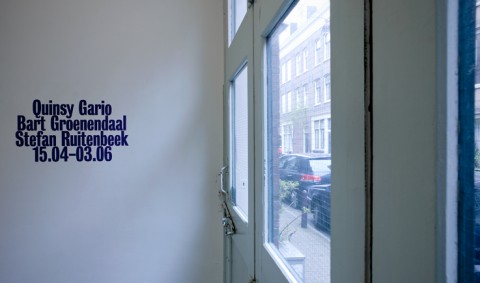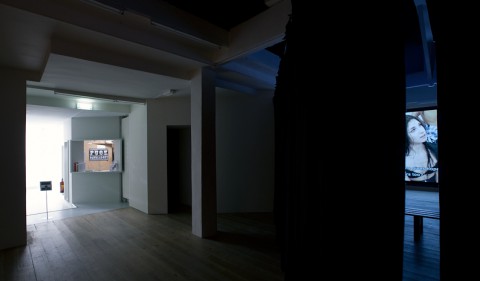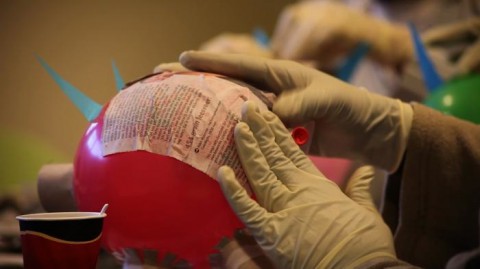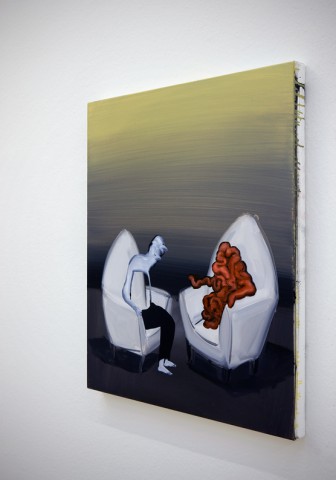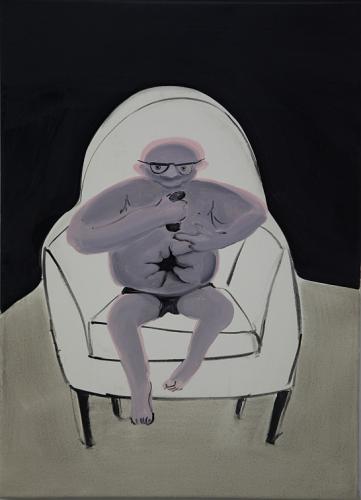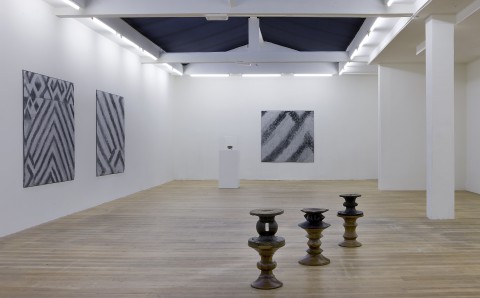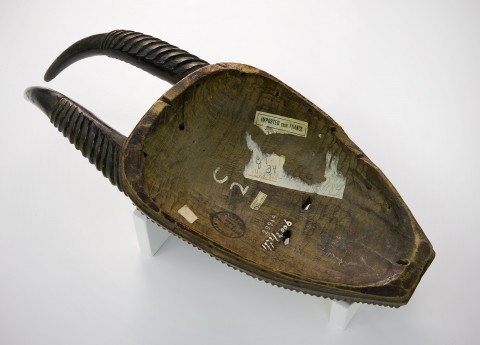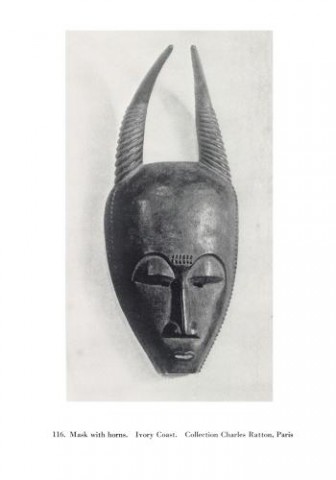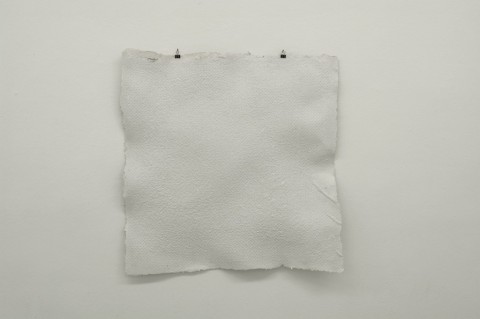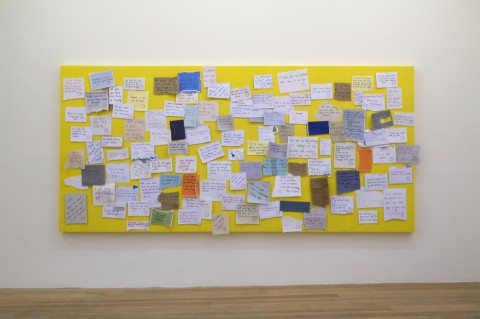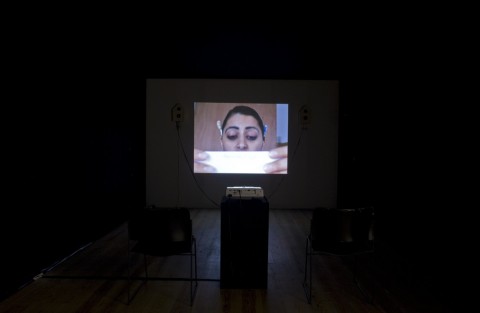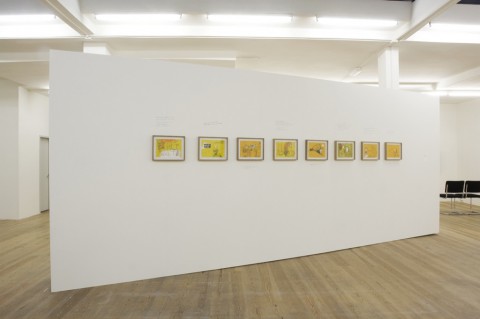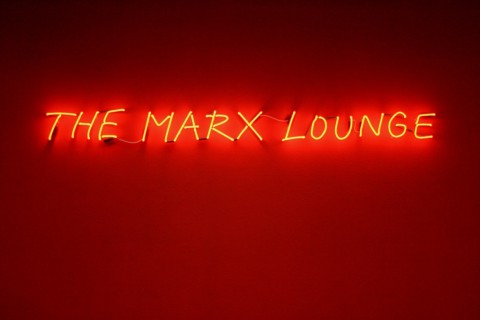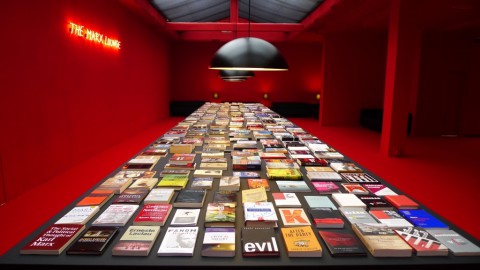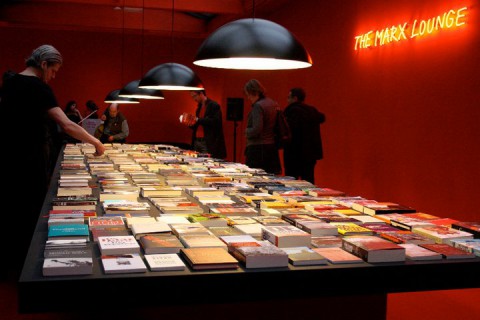10 April – 1 June in RAW Material Company in Dakar, Senegal
It is with great pride that SMBA announces the exhibition ‘Hollandaise, a journey into an iconic fabric’ in RAW Material Company, Dakar. The exhibition was on show at SMBA from 3 November, 2012, until 6 January, 2013. The background for the exhibition ‘Hollandaise’ is the long-standing economic relationship between the Netherlands and the African continent. The title refers to the colorful printed fabrics that are exported from the Netherlands to Africa, and therefore popularly known as Hollandaise or Dutch Wax. It was Dutch textile enterprises such as Vlisco which developed commercial applications for Javanese batik in the 19th century, and found their largest market in West Africa. Today the brightly colored fabric is regarded as typically African. But in fact it is the result of complex globalization processes that exhibit colonial features right down to this day. The artists Godfried Donkor, Abdoulaye Konate, Wendelien van Oldenborgh, Willem de Rooij and Billie Zangewa produced new work which reflects on these facts. Hollandaise was assembled by Koyo Kouoh, director of RAW Material Company, where the exhibition is presently to be seen.
HOLLANDAISE was developed during Project ‘1975’ at SMBA. The plans were conceived at the beginning of the project, and it ultimately served as the closing exhibition in Project ‘1975’. Because of this, HOLLANDAISE functioned as the basis for Project ‘1975’, but also as the starting point for the three year long partnership between SMBA and the Stedelijk for ‘Global Collaborations’. HOLLANDAISE first opened in SMBA, with the intention that afterwards it would go on tour to various institutions in Africa. After Senegal, HOLLANDAISE will travel on further to Ghana, Cameroon, and possibly more countries. This process establishes, renews and strengthens cooperative relationships.

